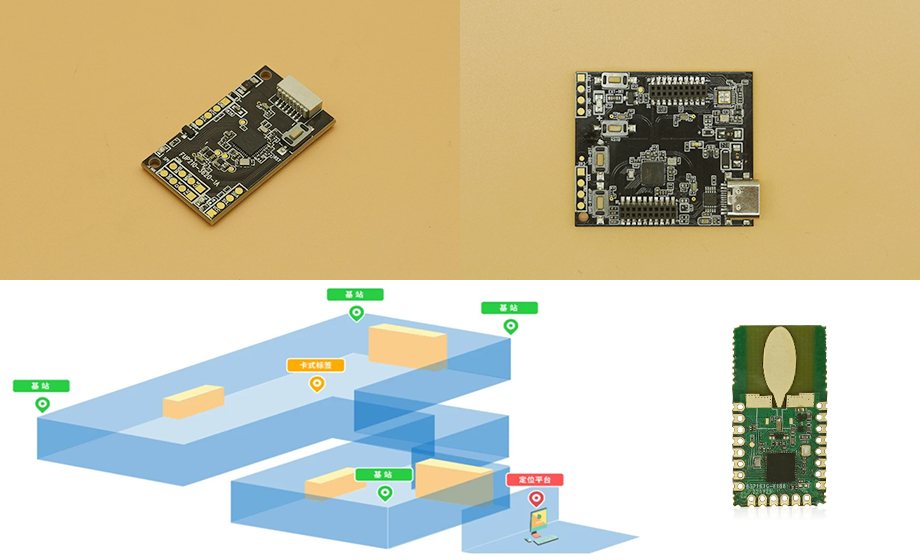With the development of technology and the continuous expansion of application scenarios, the global positioning system (GPS) has gradually failed to meet people's demand for location. For scenes with high precision requirements, the error and delay of GPS will bring no small problem. In order to solve this problem, broadband radio (UWB) is widely used in the field of high precision positioning and data transmission, and UWB module comes into being.

I. Basic knowledge of UWB module
UWB technology refers to a radio technology capable of sending and receiving very narrow pulses over an ultra-short period of time (i.e. at the nanosecond level). UWB technology has high advantages in domain width and transmission distance, and can achieve high precision indoor positioning and data transmission under the condition of low power consumption. UWB module is the product after this technology is implemented as a hardware module.
UWB module commonly works in a frequency band of 3.1-10.6GHz with a large bandwidth (>500MHz) and can send very short pulse signals (width <1ns), which can be accurately positioned and tracked. At the same time, the UWB module also supports a large number of data transmission, the data transmission rate can reach 850Mb/s. Common UWB modules include single-chip UWB module, multi-band UWB module, and ultra-wideband UWB module.
Ii. Application scenarios of the UWB module
1. Indoor positioning
In indoor environments, UWB technology can provide more accurate positioning services, with horizontal accuracy up to several centimeters and vertical accuracy up to several centimeters, without interference from building structure. In shopping malls, exhibition centers, museums, airports and other indoor occasions requiring high precision positioning, UWB technology has become an important positioning method. The UWB module can be placed at different locations in the building and connected to external devices to achieve accurate indoor positioning.
2. Internet of Things
With the continuous development of the Internet of Things technology, a variety of sensors need to collect and transmit a large amount of data, and wireless transmission technology in traditional applications can no longer meet this demand. In this case, the UWB module can provide high-speed, low-power, high-precision wireless communication solutions.
3. Security monitoring
In the field of security, UWB technology enables monitoring and positioning within closed areas by wearing or placing nodes at specific locations. For example, some military facilities, high-end office buildings, commercial centers, museums and other places need to be able to monitor and track the personnel entering the area. UWB technology can provide a very effective solution.
3. Advantages of UWB module
The UWB module has many advantages in positioning and data transmission. For example:
1. High precision positioning: UWB module can achieve several centimeters of precision positioning, which is incomparable to other technologies.
2. Multi-user environment: The UWB module has the advantages of high bandwidth and low interference, and can be used by multiple users at the same time.
3. Low power consumption: The UWB module has low power consumption and can be used on portable and low-density nodes to prolong the service life of the device.
4. Fast data transmission speed: The UWB module's data transmission speed can reach the gigabit level, which is very suitable for large-scale data transmission scenarios.
Iv. Problems and challenges faced by UWB module
Although UWB module has great advantages in location and data transmission, it also faces some problems and challenges. For example:
1. Spectrum resource contention: Like other wireless communication technologies, UWB technology also needs to use certain spectrum resources. With the increase of market demand, the scramble for spectrum resources is becoming increasingly fierce.
2. Imperfect standardization: In UWB technology, different manufacturers use different standards, which may lead to connection and communication problems between different devices.
3. Underlying technical capability: The underlying hardware capability of UWB technology is crucial to the performance of the whole system, so more efficient circuits and RF chips need to be developed.
To sum up, with the increasing demand for precision and low power consumption, the use of UWB module will become more and more common. As a relatively new wireless communication technology, UWB still has many challenges to overcome. However, from the overall trend, UWB module is bound to become the focus of future research and market focus.



